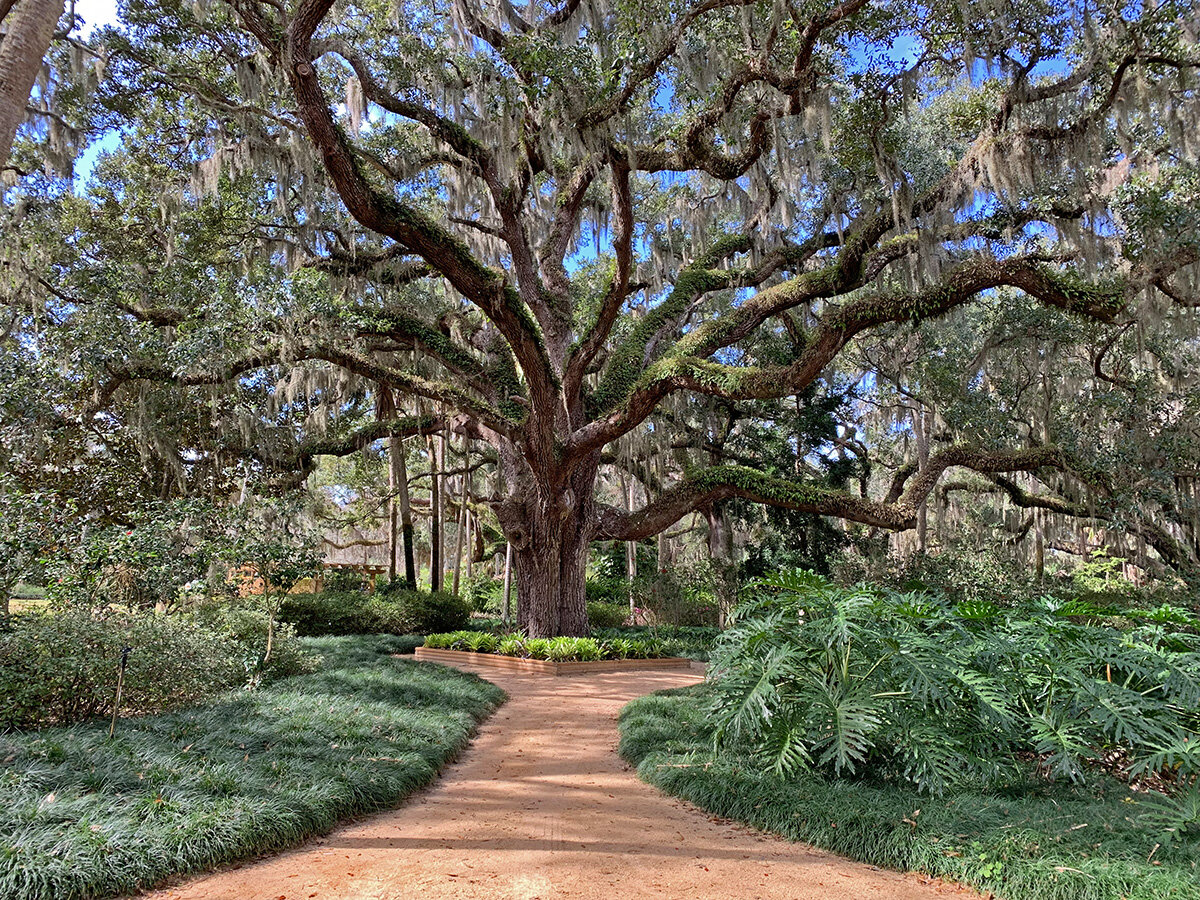Where Snowbirds Flock: Washington Oaks Gardens State Park
/Nestled between the Atlantic Ocean and the Matanzas River, Washington Oaks Gardens State Park preserves 425 acres of beautiful coastal scenery. At the heart of the estate are 20 acres of formal gardens thriving in a shady hammock of towering live oaks, hickories and magnolias.
The gardens and buildings are the legacy of Louise and Owen Young from New York, who purchased the property in 1936 as a winter retirement home. Owen was a lawyer, diplomat, counsel to five presidents, chairman of the board of General Electric, and founder of RCA. Louise was a designer and businesswoman with lingerie and fine linen shops, and interests in weaving and pottery. She used her artistic talent to design the house and gardens. Despite their wealth, the Youngs built a modest home that overlooked the river, and a separate building for Owen to conduct his business. They gradually purchased beachfront property across the road.
The gardens at Washington Oaks consist of formal plantings within a jungle setting, with elements of English and Asian garden design. The magnificent live oaks offer shade as you stroll down mondo grass-edged pathways through themed gardens and around lovely ponds. Gazebos and well-placed benches provide lovely views. Louise was a talented gardener, and filled the garden with her favorites — camellias, azaleas, orchids and citrus, all of which can be seen in the garden today. A formal rectangular rose garden is an oasis of color and perfume. Rose bushes tower to heights of 8’ and include the deep crimson Don Juan, coral Tropicana, carmine Kentucky Derby, pink Sweet Surrender, yellow Sun Flare, and apricot Medallion.
The sandy soil and subtropical climate at Washington Oaks is ideal for growing citrus. The first orange groves here were established by John Moultrie, Lt. Governor of British Florida in the 1700s. In the 1800s, subsequent owners Joseph Hernandez and George L. Washington grew oranges and shipped them upriver by sailboat to St. Augustine. The Youngs expanded the diversity of citrus at Washington Oaks with plantings of sweet oranges, grapefruits, lemons, limes and tangerines. At one time, Louise attempted to establish a citrus business. Owen loved the orange groves, and occasionally the wealthy industrialist set up crates by the road and sold fruit to tourists.
Across the street from the gardens you will find Washington Oaks Gardens State Park beach, which is renowned for its Coquina formations. The Coquina rock is part of the Anastasia formation, which was created during the Pleistocene era (12,000 to 2.5 million years ago) and stretches from St. Augustine to Palm Beach County. Coquina rock is a type of sedimentary rock formed from shells and sand sorted by the waves. When the sea level was lower, these shells and sand were exposed to rain. The rainwater dissolved some of the calcium carbonate (limestone) from the shells, which glued the sand and shells together into rock. Close inspection of the rock reveals the individual shells and sand grains that are cemented together. The word “coquina” is Spanish for “cockle,” the small, burrowing clam that lives in the sand at the ocean’s edge.
In addition to the gardens, the park offers trails for hiking and biking, and opportunities for birding, fishing, beachcombing, sunbathing and photography.
Washington Oaks Gardens State Park is located at 6400 N. Ocean Dr., Palm Coast, FL 32137, (386) 446-6783, washingtonoaks.org.
Hours: Daily 8 am–sunset. Admission: $5 per vehicle
You Might Also Like






















